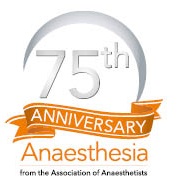Editorial: Social media for rapid knowledge dissemination: early experience from the
COVID-19 pandemic

Anaesthesia 2020; 75: 1579-82.
A. K. M. Chan, C. P. Nickson, J. W. Rudolph, A. Lee and G. M. Joynt
With the ever increasing pace of medical advances, traditional
means of sharing knowledge may lead to information already
being outdated by the time it reaches its intended audience. The
use of social media is widespread among healthcare workers and
provides a platform for more rapid worldwide dissemination of
information than more traditional methods. During the COVID-19
pandemic, this has proved invaluable as a means of sharing up-to-date
resources, guidelines and information in a rapidly evolving
situation.
In their editorial Chan et al. discuss the benefits and limitations
of social media for spreading information, using the example of
an infographic outlining the principles of airway management in
the context of COVID-19 that was shared on various social media
platforms early on in the pandemic. They conclude
"Free and
rapid access to high-quality information from verifiable sources is
valuable to optimise the global medical response to crises such
as the current COVID-19 pandemic",
and include criteria for the
responsible use of social media for this purpose.
As an avid consumer of Free Open Access Medical Education
(FOAMEd), the benefits are clear to see – I can pick up my phone,
scroll through Twitter, find the latest articles or ‘hot takes’ and then
choose what I want to read from journals, blogs and other sources.
Articles that were previously behind a pay wall or would take
months to be published are now immediately available. A perfect
example of this is the collaboration between FICM, ICS, Association
of Anaesthetists and RCoA during the COVID-19 pandemic
creating a ‘COVID hub’ where the latest information could be
shared quickly across multiple platforms [1].
So have we now found a perfect method for rapidly sharing
medical information? Unfortunately not, as there are several
problems associated with the growing use of social media for this purpose, many of which are highlighted by Chan et al. The sharing
of non-peer-reviewed materials and opinion pieces is common,
with the risk of creating an echo chamber where we only ever
see the information that feeds into our preconceived beliefs. This
has the potential to pull us away from evidence based practice
and affect patient care for the worse. Additionally, in a time when
we are finally appreciating the importance of wellbeing amongst
healthcare workers, social media use has the potential to create a
situation where we never switch off from the rigours of working life
as there is a constant reminder about the latest ‘must read’ set of
guidelines and articles; certainly this is a trap I have fallen into in
the past.
On balance the benefits outweigh the risks and social media
provide an unrivalled platform for spreading the latest medical
information rapidly, as demonstrated during the pandemic.
However, it is important to have governance in place, and Chan et
al.’s criteria for the responsible use of social media-disseminated
information is a good place to start (Box 1). I would add to this,
and advise that one has one’s own set of rules, for example daily
time-outs or regular extended breaks from the various platforms;
this may help to avoid the potential negative effects on wellbeing,
and ultimately improve one’s learning experience and knowledge
acquisition.
Happy scrolling.
Adam Al-Attar
Elected member, Association of Anaesthetists Trainee Committee
ST3 in Anaesthesia, North West School of Anaesthesia
References
- ICM Anaesthesia COVID-19. News and developments in the management
of COVID-19, 2021. https://icmanaesthesiacovid-19.org/news (accessed
25/6/2021).